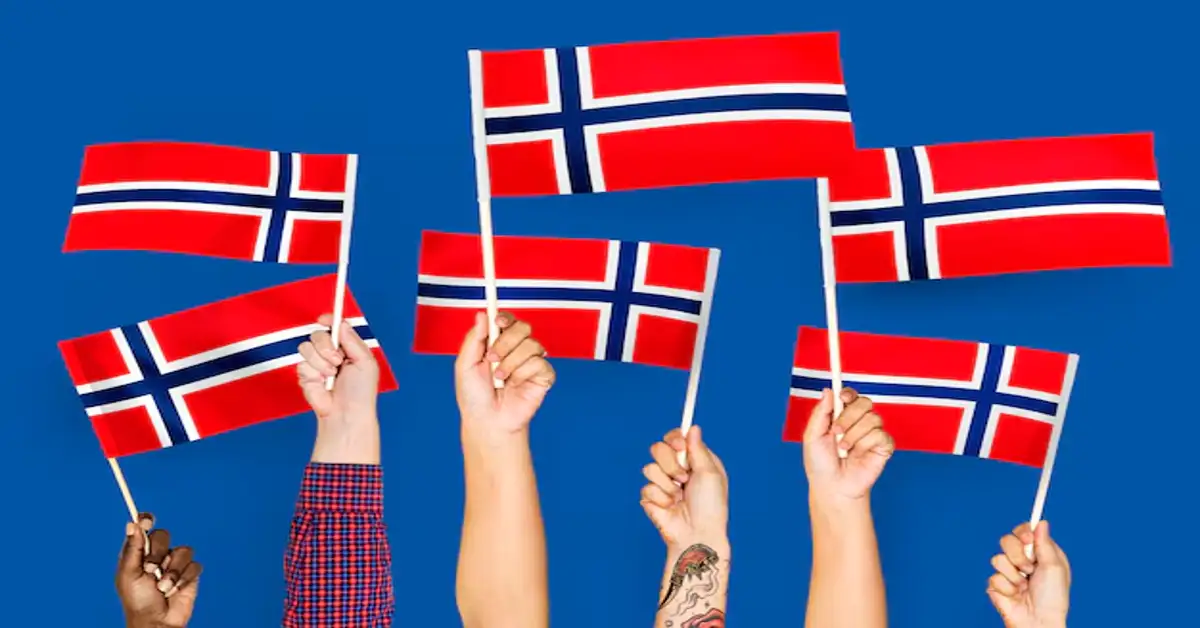The Norway flag is a symbol of national pride, unity, and history. With its striking red, white, and blue design, the Norwegian flag carries deep historical and cultural significance. This article explores the history, meaning, and interesting facts about the Norway flag.
History of the Norway Flag
The Norwegian flag has evolved over centuries, with various influences shaping its design:
- Pre-19th Century: Norway was in a union with Denmark from 1380 to 1814, and during this time, the Danish flag (Dannebrog) was commonly used.
- 1814: After briefly gaining independence, Norway adopted a temporary flag inspired by the Danish design but with a Norwegian lion emblem.
- 1821: The current design was introduced by Fredrik Meltzer, a parliament member. The red background with a blue cross outlined in white was officially adopted.
- 1905: Norway dissolved its union with Sweden, and the flag became the sole national symbol.
| Aspect | Details |
|---|---|
| Official Name | Flag of Norway |
| Designed By | Fredrik Meltzer (1821) |
| Adoption Date | 1821 (design introduced), 1905 (became national flag after independence) |
| Design | Red background with a blue Nordic cross outlined in white |
| Shape & Ratio | Rectangular, 2:3 proportion |
| Symbolism |
– **Red, White, and Blue:** Represents Norway’s ties to Scandinavian countries and democratic influences. – **Nordic Cross:** Signifies Christian heritage and unity with other Nordic nations. |
| Historical Background |
– 1380-1814: Used Danish flag (Dannebrog) during the union with Denmark. – 1814: Briefly used a Danish-style flag with a Norwegian lion emblem. – 1821: Current design introduced by Fredrik Meltzer. – 1844-1898: Featured a union mark symbolizing Norway’s ties with Sweden. – 1905: Became the national flag after Norway’s independence. |
| Usage |
– Displayed on government buildings, ships, and embassies. – Flown on national holidays like **May 17th (Constitution Day)** and **July 29th (St. Olaf’s Day).** – Lowered to half-mast during national mourning periods. – Used in military and naval contexts. |
| Interesting Facts |
– One of the most recognizable national flags in the world. – Inspired by the Danish flag but modified with a blue cross. – Belongs to the Nordic cross family, similar to Sweden, Denmark, Finland, and Iceland. |
Meaning and Symbolism of the Norway Flag
Each color and element in the Norway flag has deep symbolic meaning:
- Red, White, and Blue: These colors reflect Norway’s historical ties to Denmark, Sweden, and its admiration for democratic nations like the UK, France, and the USA.
- Nordic Cross: The off-center cross represents Norway’s Christian heritage and aligns with the flag designs of other Nordic countries, including Sweden, Denmark, Finland, and Iceland.
Design and Specifications
The Norway flag follows a specific design format:
- Shape: Rectangular with a 2:3 ratio.
- Colors:
- Red background
- White-bordered blue cross
- Placement: The cross is off-center, extending to the edges of the flag.
Interesting Facts About the Norway Flag
- Inspired by Scandinavian Traditions: The Norwegian flag follows the Nordic cross design, a unifying feature among Scandinavian countries.
- One of the Most Recognizable Flags: Its simple yet bold design makes it easily identifiable worldwide.
- Used in Multiple Contexts: The flag is displayed on government buildings, ships, national holidays, and even everyday homes.
- The ‘Union Mark’ Phase: Between 1844 and 1898, the flag had a union mark in the canton to represent Norway’s ties with Sweden.
When is the Norway Flag Used?
The Norwegian flag is prominently displayed on special occasions and national events, including:
- May 17th: Norway’s Constitution Day, the most significant national holiday.
- July 29th: Olsok (St. Olaf’s Day), honoring Norway’s patron saint.
- National Mourning Days: Lowered to half-mast during memorials and national tragedies.
- Military and Naval Use: Used on warships, government buildings, and embassies worldwide.
Conclusion
The Norway flag is more than just a national emblem—it’s a representation of Norway’s history, freedom, and cultural identity. Whether waving proudly on Constitution Day or flying over government buildings, it remains a powerful symbol of Norwegian heritage.
Frequently Asked Questions (FAQs)
1. What do the colors of the Norway flag represent?
The red, white, and blue reflect Norway’s Scandinavian ties and democratic influences.
2. Who designed the Norway flag?
Fredrik Meltzer, a Norwegian politician, designed the flag in 1821.
3. How is the Norway flag different from Denmark’s flag?
While inspired by Denmark’s red and white design, the Norwegian flag includes a blue cross to differentiate it.
4. What is the proper way to display the Norway flag?
The flag should never touch the ground and must be taken down before sunset unless it’s illuminated.
5. When did the Norway flag become official?
The current flag design was officially adopted in 1821 and became the national flag in 1905 after Norway’s independence.









